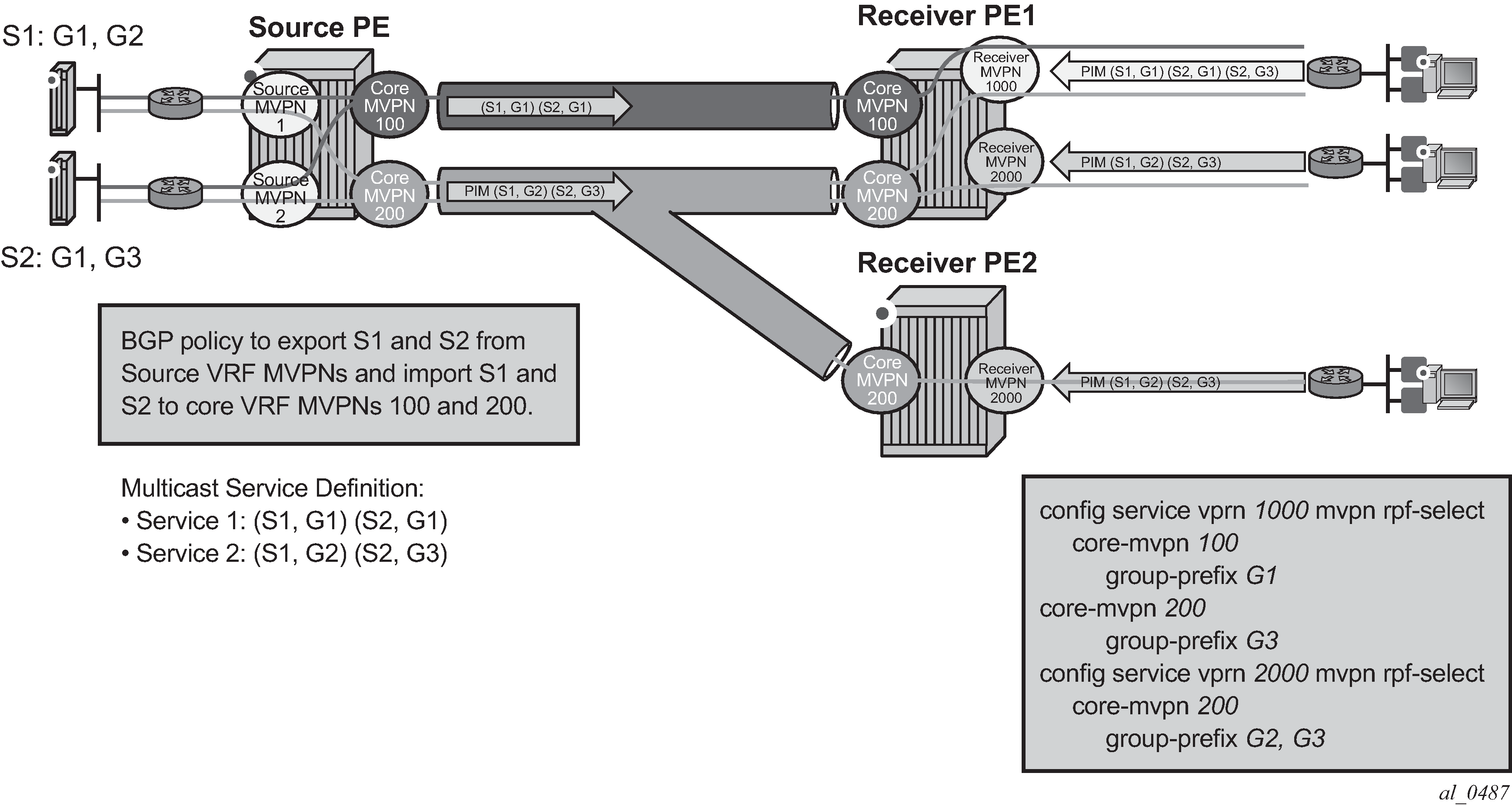In some deployments, such as IPTV or wholesale multicast services, it may be desirable to create one or more transit MVPNs to optimize delivery of multicast streams in the provider core. Figure: Source PE transit replication and receiver PE per-group SSM extranet mapping represents an example deployment model.

The architecture displayed in Figure: Source PE transit replication and receiver PE per-group SSM extranet mapping requires a source routing instance MVPN to place its multicast streams into one or more transit core routing instance MVPNs (each stream mapping to a single transit core instance only). It also requires receivers within each receiver routing instance MVPN to know which transit core routing instance MVPN they need to join for each of the multicast streams. To achieve this functionality, transit replication from a source routing instance MVPN onto a tunnel of a transit core routing instance MVPN on a source PE (see earlier sub-sections for MVPN topologies supporting transit replication on source PEs) and per-group mapping of multicast groups from receiver routing instance MVPNs to transit core routing instance MVPNs (as defined below) are required.
For per-group mapping on a receiver PE, the operator must configure a receiver routing instance MVPN per-group mapping to one or more source/transit core routing instance MVPNs. The mapping allows propagation of PIM joins received in the receiver routing instance MVPN into the core routing MVPN instance defined by the map. All multicast streams sourced from a single multicast source address are always mapped to a single core routing instance MVPN for a specific receiver routing instance MVPN (multiple receiver MVPNs can use different core MVPNs for groups from the same multicast source address). If per-group map in receiver MVPN maps multicast streams sourced from the same multicast source address to multiple core routing instance MVPNs, then the first PIM join processed for those streams selects the core routing instance MVPN to be used for all multicast streams from a specific source address for this receiver MVPN. PIM joins for streams sourced from the source address not carried by the selected core VRF MVPN instance remains unresolved. When a PIM join or prune is received in a receiver routing instance MVPN with per-group mapping configured, if no mapping is defined for the PIM join’s group address, non-extranet processing applies when resolving how to forward the PIM join/prune.
The main attributes for per-group SSM extranet mapping on receiver PE include support for:
Rosen MVPN with MDT SAFI. RFC6513/6514 NG-MVPN with IPv4 RSVP-TE/mLDP in P-instance (a P-instance tunnel must be in the same VPRN service as multicast source)
IPv4 PIM SSM
IGMP (C-S, C-G), and for IGMP (C-*, C-G) using SSM translation
a receiver routing instance MVPN to map groups to multiple core routing instance MVPNs
in-service changes of the map to a different transit/source core routing instance (this is service affecting)
The following are restrictions:
When a receiver routing instance MVPN is on the same PE as a source routing instance MVPN, basic extranet functionality and not per-group (C-S, C-G) mapping must be configured (extranet from receiver routing instance to core routing instance to source routing instance on a single PE is not supported).
Local receivers in the core routing instance MVPN are not supported when per-group mapping is deployed.
Receiver routing instance MVPN that has per-group mapping enabled cannot have tunnels in its OIF lists.
Per-group mapping is blocked if GRT/VRF extranet is configured.